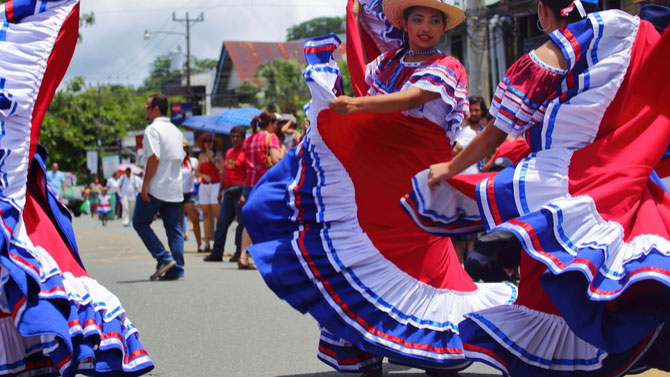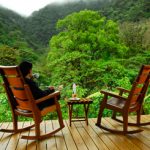Costa Rica is a land of diverse beauty boasting national parks, tropical rainforests, picturesque beaches, and towering volcanic peaks. There are more than 10,000 colorful plants in Costa Rica not to mention a multitude of exotic animals. As you delve into the natural beauty of Costa Rica you will find a country filled with national pride and a rich history.
Back in Time
Long before the arrival of the first Europeans the inhabitants of Costa Rica were few. Costa Rica’s most famous archeological site, Guayabo, lies east of San Jose and dates back to 1,000 B.C. The site is still being excavated and has revealed a thriving community of 10,000 or more complete with paved roads, bridges, aqueducts, and homesites. Ancient petroglyphs as well as refined gold and jade work have also been unearthed at Guayabo. Other sites along the Nicoya peninsula and the central highlands reveal influences from the Olmec and Nahuatl civilizations. Along the west coast of Costa Rica, stone spheres or Las Bolas have been found of varying sizes ranging in a few centimeters to 6.6 feet in diameter and weighing up to 15 tons. While the stone spheres themselves still remain a mystery, the Pre-Columbian settlements where these balls are located are now a UNESCO World Heritage Site.
Enter the Europeans
In 1562, Juan Vasquez de Coronado of Spain arrived to govern the small country and established Cartago as its capital in 1563. The four indigenous tribes nearly disappeared at the hands of Spanish colonizers. While some escaped the region many died from smallpox brought by the Spaniards. Even with the influx of African slaves supplied by Spain, the Costa Rican colony failed to thrive as others did. In the 18th century, the colony began to thrive with the help of tobacco and wheat exports.In the 16th century when the first Europeans arrived the entire region’s indigenous residents lived in four distinct tribes. The Caribs lived along the east coast while the Borucas, Diquis, and Chibhas inhabited the southwest. Columbus was the first European to arrive near present day Limón on September 18, 1502, and the Caribs warmly welcomed the European visitors to their shores. Later the Caribs’ gold nose and ear jewelry inspired Gil Gonzalez Davila from Spain to name the region Costa Rica meaning Rich Coast.
Independence
In 1821, Mexico rebelled against Spanish rule and Costa Rica and the rest of Central America joined Mexico in the rebellion. Independence came on September 15, 1821, though the news didn’t reach Costa Rica until October. Two factions formed – should Costa Rica become a part of Mexico or remain a sovereign state? A brief civil war ensued and a sovereign Costa Rica emerged.
In 1824, Juan Mora Fernandez was elected. Known for the expansion of public education and progressive land reforms, the rise of the coffee barons overshadowed Fernandez’s positive changes. Using their power, the barons overthrew the president who was succeeded by Juan Rafael Mora. Mora lead the Costa Ricans to defeat William Walker, a madman who was determined to conquer the nations of Central America.
Toward Democracy
General Tomas Guardia seized control of the government in 1870 making a number of reforms in the military, education, and taxation. At the end of his 12-year dictatorship Costa Rica strived for democracy. Dr. Rafael Calderon was elected in 1940. His reforms included land policies, minimum wage, and taxation. His refusal to leave office after losing the election in 1948 led to civil war.
Jose Maria (Don Pepe) Figueres Ferrer defeated Calderon and became one of Costa Rica’s most influential leaders. His nationalized banks, presidential term limits, and civil rights reforms created the peaceful democratic legacy which exists in Costa Rica today.
More recently, President Oscar Arias Sanchez was awarded the Nobel Peace Prize in 1987 for his unending efforts to promote peace in the region.
Today Costa Rica is a diverse land where agriculture, technology, and eco-tourism flourish. Costa Rica enjoys stability, democracy, and a high standard of living and has been voted one of the happiest places in the world according to the Happy Planet Index.








